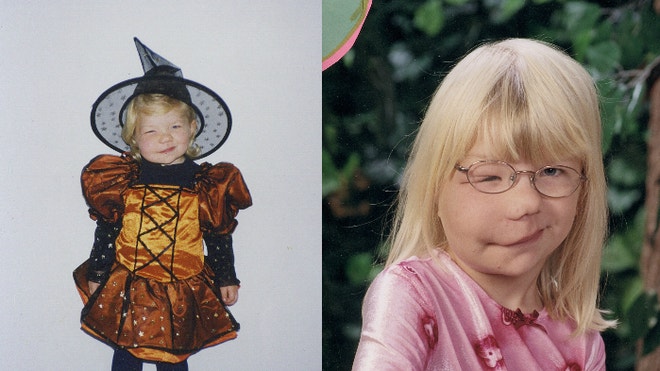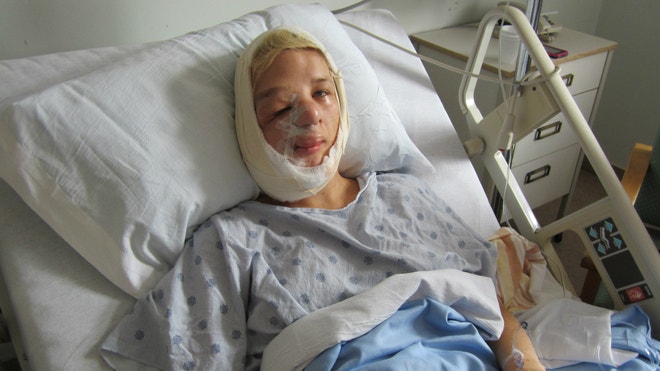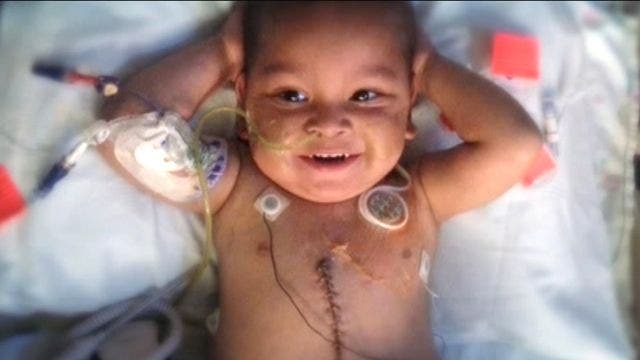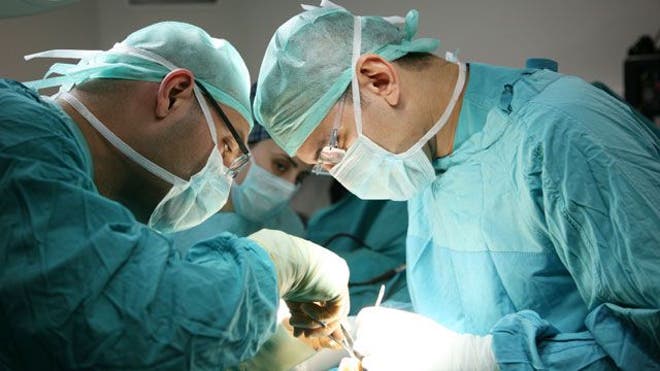
Surviving adolescence can be difficult for anyone – but for Sarah Atwell, navigating her teenage years was an especially harsh struggle.
Since birth, Sarah has suffered from a rare disease called neurofibromatosis – a condition that triggered a massive tumor to develop on half of her face. Over time, Sarah’s deformity steadily grew worse, causing the right side of her face to dramatically droop downward.
The condition – which is mostly cosmetic – made Sarah the target of intense bullying for many years.
“It was really hard; I used to get bullied a lot,” Sarah, now 18, told FoxNews.com. “They used to call me ‘fat face’ and say I had diseases. As a little kid hearing it, it didn’t feel very good.”
But finally, after years of suffering through negative comments, Sarah made the decision to undergo risky reconstructive surgery in order to remove part of her tumor. Her journey is chronicled in a new one-hour special called “The Girl With Half a Face,” which premieres Wednesday 10 p.m., ET on “Discovery Fit & Health.”

Living with neurofibromatosis
A very rare genetic disorder, neurofibromatosis is characterized by a disturbance of cell growth in the nervous system, prompting tumors to develop on some of the body’s nerve tissues. These tumors can grow in almost any area of the body, but in Sarah’s case, the tumor was concentrated on the entire right side of her face.
“It’s an unusual congenital condition,” Dr. Steven Morris, Sarah’s surgeon, told FoxNews.com. “In [Sarah’s] particular presentation, it basically involves a large growth of nerve elements in the face. It’s usually benign, but it grows over a period of time and creates deformities. It may be a fairly small and isolated lesion, but in her case, it was one big mass.”
Because of her tumor’s size, Sarah said she felt incredibly self-conscious growing up and became reluctant to socialize with others. After enduring school days filled with name calling and hurtful comments, she would mostly come home and just stay in her room.
Fortunately, Sarah had one important outlet growing up: working with children. She enjoyed babysitting younger kids in her neighborhood or helping children through specialized programs at her high school.

According to Sarah, the children she worked with didn’t care about her tumor.
“If I was having a bad day, a smile or hug from them turned everything around,” Sarah said.
Yet the bad days often outweighed the good, and Sarah eventually became fed up with all of the bullying and teasing from her classmates. Finally, she decided enough was enough and that it was time to take a stand. One night, when her parents weren’t home, Sarah made a video in which she told her story on a series of note cards.
And when she posted it online, the response was incredible.
Life changing surgery
Not only did Sarah receive tons of support from online viewers, her viral video also led her to Dr. Steven Morris, in the division of plastic surgery at the Queen Elizabeth II Health Sciences Centre in Halifax, Nova Scotia.
“When she first came to see me, the lesion really occupied the whole of her right face; it was growing all around her eye,” Morris said. “She’d had a couple of previous de-bulking procedures, but [the tumor] went from her nose to the ear on the right, and the skin hung down off of her jawbone. It was an enormous overgrowth of abnormal tissue.”
After assessing the true size of the tumor, Morris agreed to operate on Sarah – though he warned her that it could be a very dangerous procedure. Since they would be reconstructing her face, there was a risk that they could sever a blood vessel and she could suffer too much blood loss.
“The principle of our surgical approach is to maintain normal tissue so the skin is fairly normal,” Morris said. “The nerves are very abnormal, so [in typical cases] there might be a fine wisp of a nerve fiber, but when it grows in neurofibromatosis, it might be as big as a pencil. So we’re trying to maintain normal nerve function and trying to preserve normal structure.”
Despite the inherent risks, Sarah agreed to undergo the operation – and after four hours of intensive reconstructive surgery, the procedure was finished. Once her facial swelling went down, Sarah decided to look into the mirror for the first time.

“I was pretty happy, because I had straight lips,” Sarah said. “I kept looking in the mirror and taking pictures of myself. My mom and neighbors were shocked. We sent my dad pictures, and he was really happy. He said as long as I’m happy, he’s happy.”
While Sarah’s major operation is now complete, there is still more work to be done in order to give Sarah the face she wants.
“The next procedure will be to de-bulk the tumor around her eye,” Morris said. “Her eye had some sight in it, but it wasn’t a great amount of sight. The tough challenge is what to do with eye and reshape the eye socket.”
But no matter what happens, Sarah is confident that she will achieve her dreams in life. While the surgery helped to alter her appearance, she said it hasn’t altered what really matters.
“I don’t think it’s really changed anything,” Sarah said. “Like I said to my mum, I can do anything I put my heart to.”
Source: article















